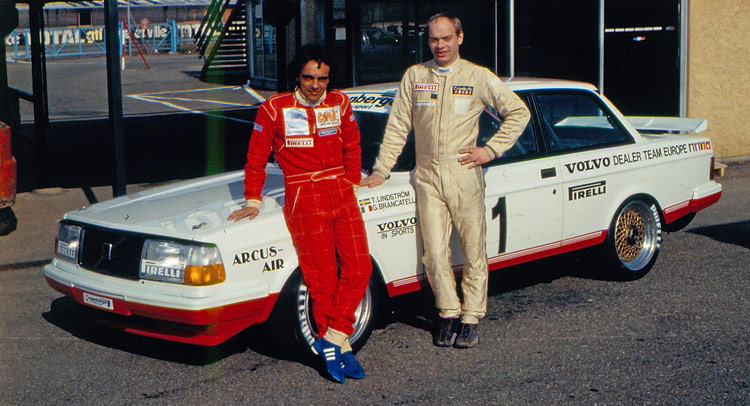Its shape may have earned it the nickname “The flying brick”, but the Volvo 240 Turbo race car was very competitive.
It all started in 1981, when Volvo launched its 240 family car with a 155hp 2.1-liter turbo engine. Volvo didn’t resist the temptation to go racing with it and in 1983 it built 500 240 Turbo Evolution cars in order to gain Group A homologation.
These cars had bigger turbos, modified engine control systems and Water Turbo Traction – which involved water injection into the intake, an invention developed and patented by Volvo.
In order to get Group A homologation for the 240 Turbo, Volvo also had to build at least 5,000 cars of the model type each year. Group A cars had to have at least four seats and the minimum weight was related to the engine capacity.
In 1984 Volvo went racing with the 240 Turbo, winning two races: the ETC event at Zolder in Belgium with Swedes Ulf Granberg and Robert L. Kvist and the DTM race at Norisring in Germany with Per Stureson.
The following year, Volvo expanded the operation and contracted two teams to operate as a factory team. The Swiss Eggenberger Motorsport team participated in ETC under the name of Volvo Dealer Team Europe, while the second team was Sweden’s Magnum Racing. In addition, IPS Motorsport competed in DTM.
In 1985, the Volvo 240 Turbo was unstoppable: it won both the ETC and the DTM, as well as the touring car championships in Finland, Portugal and New Zealand. In addition to this, a right hand drive 240 Turbo won the Scottish rally championship.
The racing version of the Volvo 240 Turbo had aluminum cylinder heads and forged pistons, connecting rods and crankshafts. The injection used a custom-built Bosch K-jetronic system and the Garrett turbo charged up to 1.5 bar. As a result, the 2.1-liter engine produced around 300 hp and gave the car a top speed of 260 km/h (161 mph).











